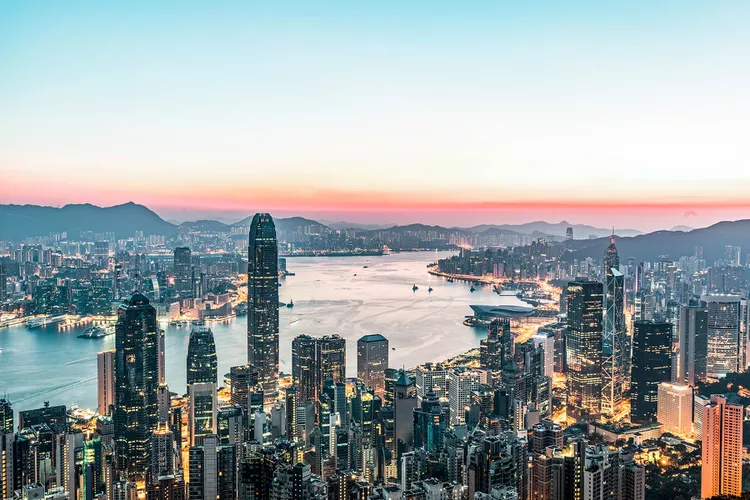What to Know About Hong Kong’s Current Travel Landscape:
- Overview of Hong Kong’s re-opening.
- Understanding entry and exit regulations.
- New accommodations and luxury hotels.
- Current cultural attractions and experiences.
What you need to know about getting to Hong Kong right now, and what to do once you’re on the ground.
After nearly three years, Hong Kong’s entry restrictions have been fully lifted, testing requirements are no more, and hotels, bars, and restaurants have their doors wide open. United Airlines also announced plans to restart flights to Hong Kong in March, and flag carrier Cathay Pacific will increase capacity throughout 2023, reaching 70 percent of pre-pandemic passenger numbers by end of year.
While change is inevitable after years of isolation, travelers to this fiercely metropolitan city will find so much to love. Now is the time to visit — or revisit — this cosmopolitan megacity.
What It’s Like in Hong Kong Right Now — and What to Know About Entry and Exit
The path to Hong Kong’s reopening has been far from easy. Since 2019, Hong Kongers have faced seemingly insurmountable challenges. First, the government outright suppressed a pro-democracy movement, banning political demonstration and arresting those who defied. Then, the outbreak of the pandemic, along with subsequent extreme restrictions, forced the city’s residents into lockdown for months on end — and kept travelers at bay.
It’s no doubt the one-two punch of political turmoil and a pandemic knocked Hong Kong down temporarily. However, for the first time in years, Hong Kongers — and those visiting — have good reason to get back up swinging (and exploring) again. That’s because there’s a resurgent cultural and museum scene, new or refurbished landmark luxury hotels, and, at the moment, fewer crowds to get in the way of it all.
I arrived in early January, nostalgic and eager, to a quiet Hong Kong International Airport to discover that, at least on the surface, not much has changed since my last visit in mid-2019. There are no tests to take, no paperwork to fill out, and no apps to download. While tourists have yet to return in droves, the metropolis still has a steady pulse. I felt that energy as I crisscrossed Hong Kong Island from Kennedy Town to Causeway Bay on a “ding-ding tram” and sailed through Victoria Harbor on my favorite mode of transportation, the long-beloved Star Ferry, between Hong Kong Island and Kowloon. In many ways, it feels like the ideal situation; the day-to-day fast-paced life of Hong Kong remains without out-of-towners adding overwhelming volume to the city.
The New Places to Stay in Hong Kong
Several high-end luxury hotels have either come on the scene or thoroughly refreshed their offerings since the city’s pandemic-induced lockdown. Both Rosewood Hong Kong and the St. Regis Hong Kong debuted in 2019, less than a year before travel to the region came to a halt. Last May, the Fullerton Ocean Park Hong Kong opened with 425 rooms and an inviting infinity pool overlooking the South China Sea. The Mandarin Oriental, Hong Kong, celebrating its 60th anniversary this year, unveiled a revamped food and beverage offering mid-pandemic, including an impressive top-floor Japanese izakaya restaurant concept with three distinct bars and sweeping views of the city. The hotel will also embark on a room modernization project later in 2023. After its biggest transformation in 30 years, Regent’s flagship Hong Kong hotel (the former Intercontinental) is in the midst of its much-anticipated soft reopening.
What to See and Do in Hong Kong Right Now
On the culture and heritage front, there has been a trove of recent developments. Few neighborhoods are more symbolic of Hong Kong’s new museum renaissance than West Kowloon. This cultural district created from reclaimed land, set across 100 acres, will be home to 17 arts, culture, and performance venues when complete. The centerpiece is the M+ contemporary art museum, Asia’s first venue dedicated to visual culture, which opened in November 2021.
Moreover, across the harbor on Hong Kong Island, there is a hum of activity as well. Tai Kwun Center for Heritage and Arts, where 16 historic colonial-era buildings in the center of the city were converted to a multi-purpose enclave of buzzy exhibitions and galleries, alongside an array of international restaurants and bars, opened in mid-2018. An art exhibition focused on LGBTQ perspectives, called “Myth Makers – Spectrosynthesis III,” was a personal Tai Kwun highlight and shouldn’t be missed.
Just up the road from Tai Kwun is the new, sixth-generation Peak Tram, Asia’s oldest funicular railway and one of Hong Kong’s most popular attractions pre-pandemic. The refreshed panoramic tram, with capacity for 210 passengers, opened in August 2022. For a little more adventure, consider hiking up to the Peak, enjoying a Hong Kong-style milk tea at Hong Kong Day, and taking the scenic tram down.
Digging deeper into the hearts and minds of many Hong Kongers, you may find a less rosy picture of the city, one in which leaders have restricted the rights to complete freedom of expression. However, the people here are rebellious by nature, and they openly spoke of their frustrations when prompted. Friends even told me how they have their own silent ways to revolt, such as supporting small businesses that embrace the color yellow, a hue symbolic of the pro-democracy movement. For all that Hong Kongers have had to endure (and will continue to endure), now feels like the best time to visit and show your support. Everything else the city offers is just the icing on top.





